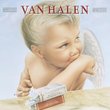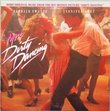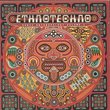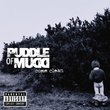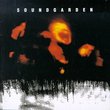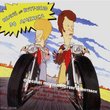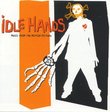| All Artists: Alejandro Amenábar Title: The Others: Original Motion Picture Score Members Wishing: 0 Total Copies: 0 Label: Sony Original Release Date: 8/10/2001 Re-Release Date: 8/7/2001 Album Type: Soundtrack Genres: Pop, Soundtracks Style: Number of Discs: 1 SwapaCD Credits: 1 UPCs: 696998970526, 5099708970529 |
Search - Alejandro Amenábar :: The Others: Original Motion Picture Score
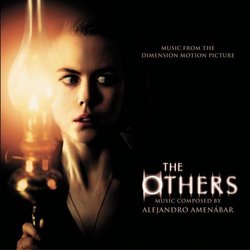 | Alejandro Amenábar The Others: Original Motion Picture Score Genres: Pop, Soundtracks
For his English-language filmmaking debut, Spanish director Alejandro Amenábar found himself dealing not only with the dissolving marriage of his megawatt-star/producer team (Nicole Kidman and Tom Cruise), but his own... more » |
Larger Image |
CD DetailsSynopsis
Amazon.com For his English-language filmmaking debut, Spanish director Alejandro Amenábar found himself dealing not only with the dissolving marriage of his megawatt-star/producer team (Nicole Kidman and Tom Cruise), but his own multihyphenate ambitions on the project. As he did for Thesis and Open Your Eyes, Amenábar not only wrote and directed, but composed the film score as well, joining a very select company of director-composers that counts John Carpenter and Mike Figgis in its ranks. But with this accomplished orchestral score, the young Spaniard may well have leapfrogged into the first tier of film composers, period. Claiming his inspiration from a childhood spent listening to film soundtracks and emulating what he'd learned as a boy, Amenábar has produced a rich, dynamic work that trades on influences from delicate French impressionism to shrill, late-20th-century modernism. Given the film's horror-genre concerns, there is a certain bowing to occasionally jolting sonic clichés, but it's the compelling way the director-composer sets them up that imparts a sense of distinct originality to his score as a whole. Amenábar is unafraid to let his longing string passages and percussive flourishes sometimes hang hauntingly for an extra bar or two, milking as much emotional resonance from the effectively eerie spaces between the notes. --Jerry McCulley Similarly Requested CDs
|
CD ReviewsAlejandro Amenabar is the director, writer... and composer First Lady Bunny | 08/11/2001 (5 out of 5 stars) "The experiment is a success!He develops a closeness with the material, fills you with the good kind of chills... it starts out very innocently, like a children's fairy tale, and then you feel ghostly spirits walking in the door in the first track. Kindly spirits, vaguely unsettled in a Disney's Haunted Mansion way. The second track begins to peek around corners, behind the forbidden doors (also the music in the film's trailer). There is an old heart within the frights that delights and sorrows the soul, that sees light to counteract the darkness of the film. Sounds silly, but it is a beautiful, atmospheric score that moves through the house, explores the rooms and clings to the storyline like the sheets on the old furniture. Soft, foreboding, and deserved of tinkles of ghost's feet upon the floor." What CAN'T this man do? Veggiechiliqueen | 10/13/2001 (5 out of 5 stars) "Alejandro Amenábar is a one-man wonder, a Renaissance man of the film world. This Spanish director is only 29 years old and wrote, directed and scored "The Others." The soundtrack maintains an undercurrent of tension and creepiness, evident in tracks such as "They Are Everywhere." Heavily influenced by Danny Elfman and the like, but enjoyable nevertheless. Swelling crescendos of ominous strings and sudden crashes mirror the onscreen action but stand alone well. Eerie piano solos, dramatic sweeps of strings, with touches of quiet, reflective moments introduced by piano. Soft, lilting flute solos at times. Could have done with some vocalists à la "Sleepy Hollow," but still a remarkable effort. And genuinely creepy at times." Really scary music H. F. Gibbard | Dark City, USA | 10/09/2001 (4 out of 5 stars) "Alejandro Amenabar not only wrote and directed "The Others"; he composed the soundtrack. This is a truly impressive achievement, and his soundtrack for "The Others" is one of the better fantasy/horror soundtracks in recent memory. Sometimes when I listen to this music it raises goosebumps, and I'm not even watching the movie!Amenabar has soaked up influences from the great fantasy film composers like Danny Elfman, Bernard Herrmann, and Jerry Goldsmith, and it shows. There is also some influence here from modern classical music (I wonder if Arnold Schoenberg is rolling in his grave, knowing that his great avant-garde classical style is known to the public mostly from horror film scores? :-)) One interesting tidbit: the ghostly "Others" of the film's title are known throughout the film as "the Invaders." Amenabar's score bears some similarity to Jerry Goldsmith's famous music for a Twilight Zone episode, also entitled "the Invaders," which concerned a woman trying to keep intruders out of her home and contained a mind-twisting surprise ending. Coincidence? Maybe..."
|

 Track Listings (15) - Disc #1
Track Listings (15) - Disc #1